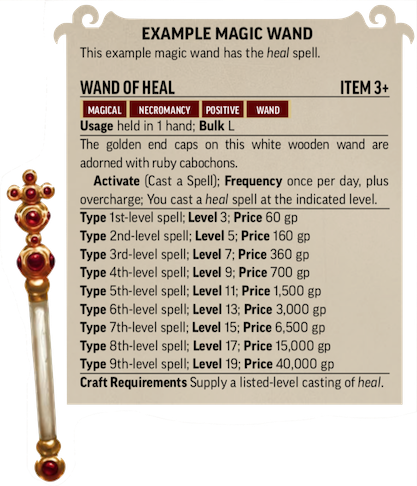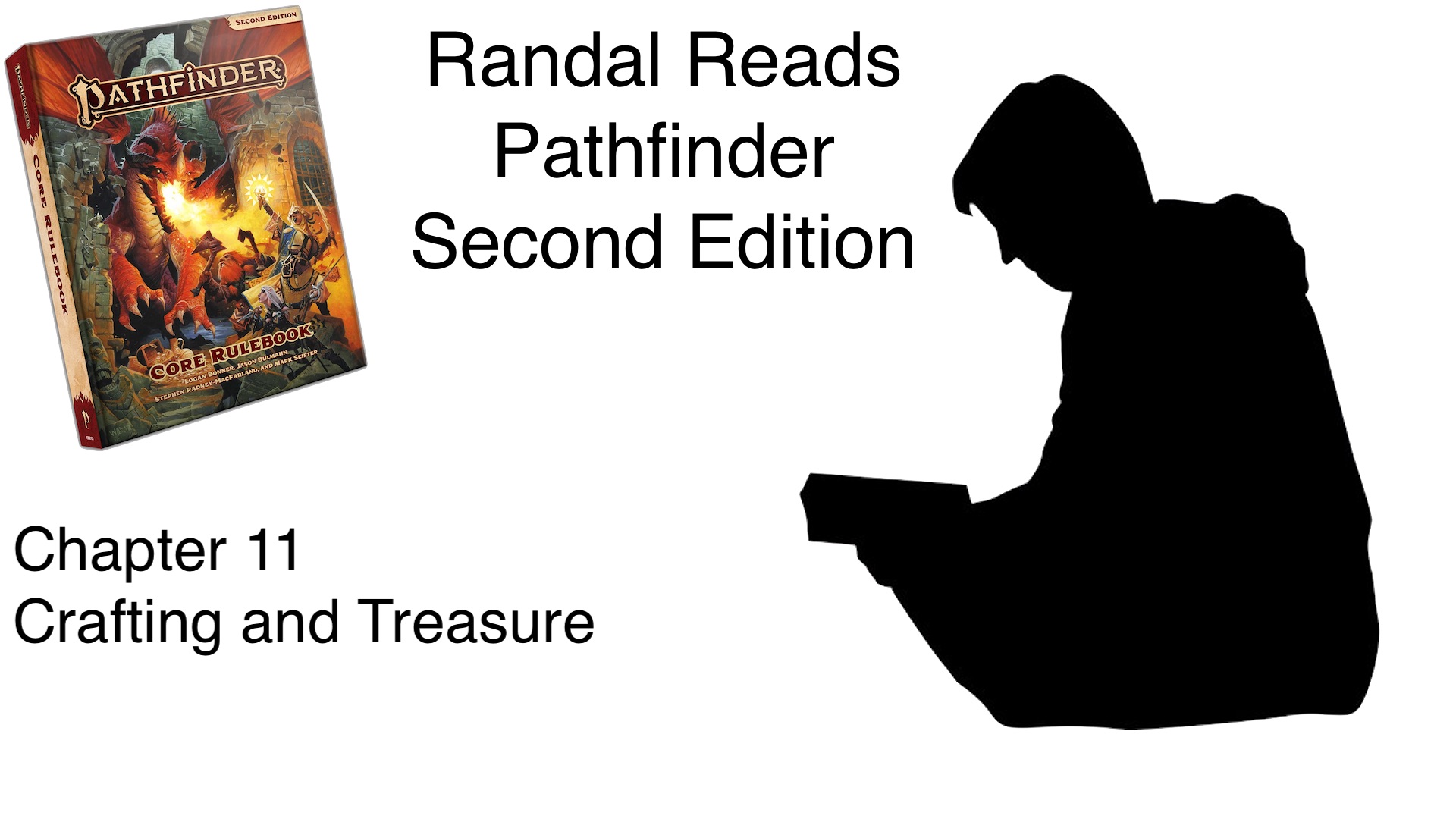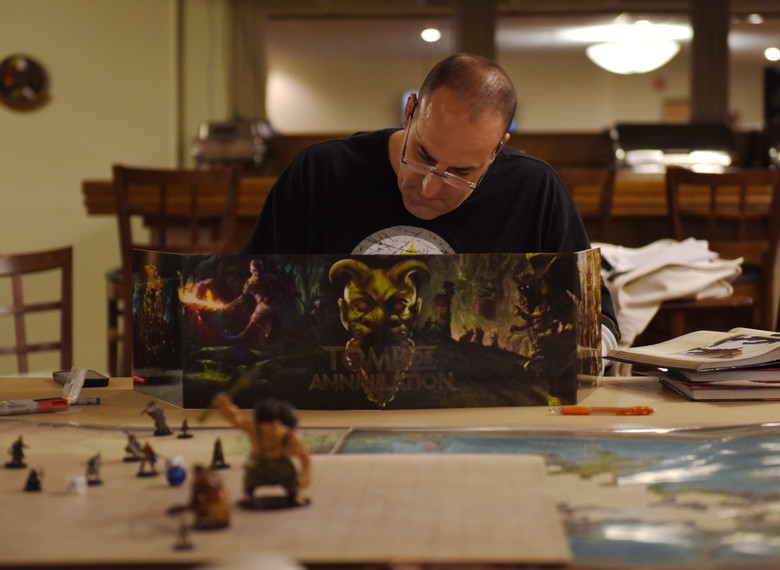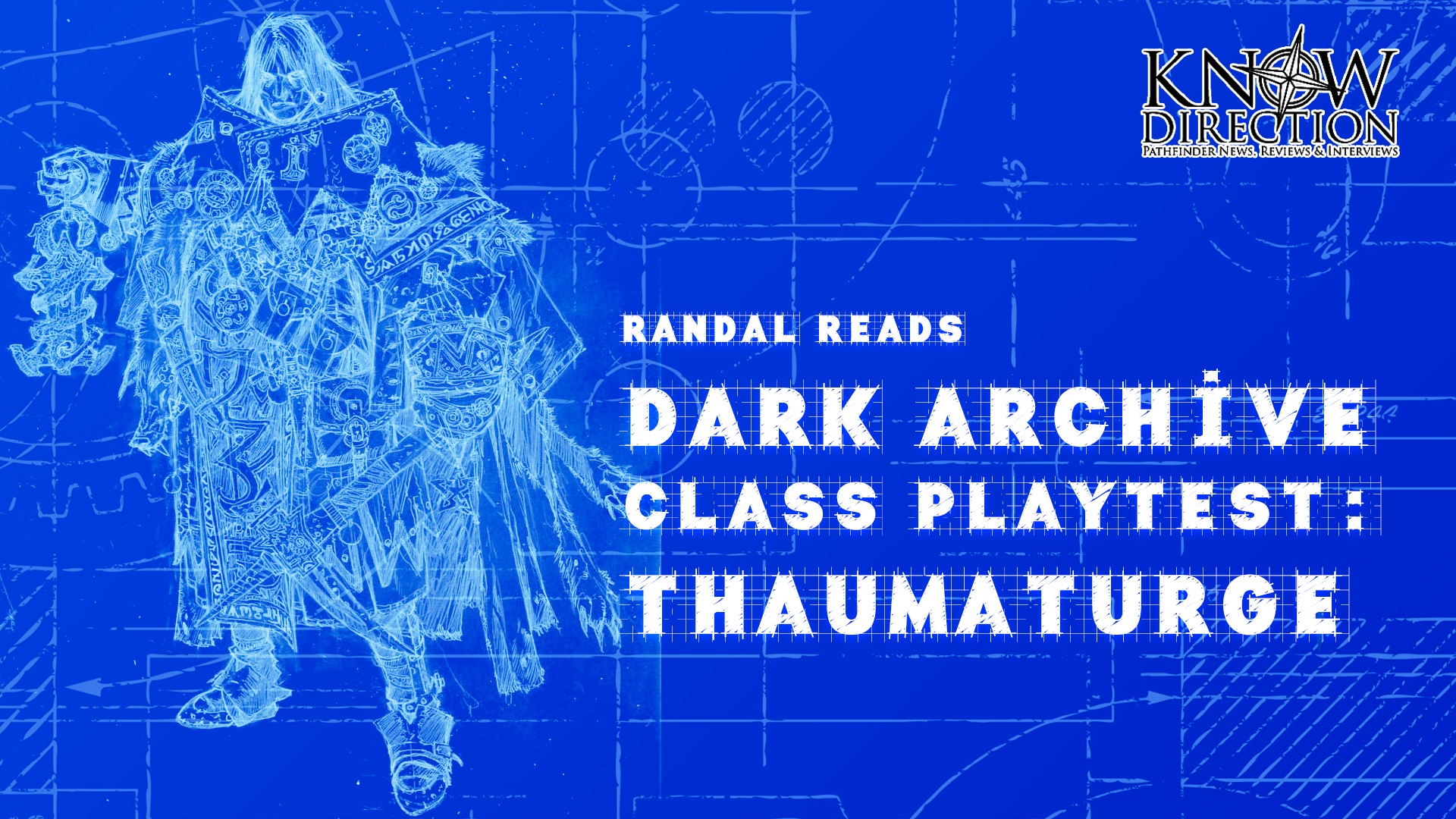Hello, and welcome to a special review of Pathfinder Second Edition. With most of the Know Direction team at Gen Con 2019, gluttonously consuming second edition in all its glory, most of our blogs are on hiatus. I, Randal, writer of Groundbreaking and Terraforming, am here to fill that void with a chapter by chapter review of the new core rulebook. This review is intended to simply be my take on the material as I read it, as first thoughts and impressions, and not a hard comparison of changes from first edition.
Chapter 11 – Crafting and Treasure
Magic items are one of the big changes to the game that I am looking forward to. I was a big fan of switching things up to remove the requirement of having the magic items that boost ability scores instead of having fun items that tell a better story.
Removing the restrictions on how many of what time of magic item, and moving to a simple 10 item limit is a nice, simple, change. Item activation has been limited to Command, Envision, Interact, and Cast a Spell. Everything you need to know about using items is here. Looking through them reinforces that alchemical items are no longer just magic items with a slightly different name and flavor. Item level is also a great addition that will really help with balancing loot and providing access to players. It is going to make it much easier for new GMs to get the feel for game balance, and also make it simple for experienced GMs to transition.
 I liked seeing the classic precious metal armors (now with orichalcum) and specific magic armors. Due to the new ways in which you can heal, without magic, it is pretty cool to see easier and cheaper access to healing elixirs and potions, and the difference between elixirs and potions is fun too. I like that scrolls use the caster’s DCs, even if it is always cast at the level at which it was written. Talismans, single use items affixed to weapons or armor that provide combat boosts are a pretty neat and fun way to provide situational boosts in combat. I also think they are going to be a lot of fun to drop as loot for parties to try out different things, such as this, uh, gem:
I liked seeing the classic precious metal armors (now with orichalcum) and specific magic armors. Due to the new ways in which you can heal, without magic, it is pretty cool to see easier and cheaper access to healing elixirs and potions, and the difference between elixirs and potions is fun too. I like that scrolls use the caster’s DCs, even if it is always cast at the level at which it was written. Talismans, single use items affixed to weapons or armor that provide combat boosts are a pretty neat and fun way to provide situational boosts in combat. I also think they are going to be a lot of fun to drop as loot for parties to try out different things, such as this, uh, gem:
Emerald Grasshopper. This metal grasshopper studded with emeralds is usually clasped to the legs of a suit of armor. When you activate it, if you succeed at the Athletics check, you Leap up to 50 feet vertically and up to 10 feet horizontally. If you critically succeed, you can Leap up to 75 feet vertically and 20 feet horizontally. If you don’t end your jump on solid ground, you flutter in the air until the end of your turn, then fall harmlessly at a rate of 60 feet per round until you reach the ground.
The classic items are all there, Bags of Holding, Decanter of Endless Water, Immovable Rod, the Traveler’s Any Tool, and of course, Wondrous Figurines. I feel like the materials are explained a lot better than they were previously. Information is broken out into Thin Items, Items, and Structures as well as low-grade, standard-grade, and high-grade. I think it will take a little getting used to, but it promises to make for more uniform pricing and quicker number crunching than previously. I love seeing orichalcum in the new rules. At first, I was just fanboying over it because I enjoy a couple of JRPGs that have it as the top tier equipment, but as I was writing this I realize that it is also another sign that they are looking to expand the game as much as they are evolving the game. This is something new that wasn’t needed, but is surely going to be enjoyed.
 One of my biggest 1e gripes is about magic weapons and armor. I disliked trading out weapons and armor every time a newer, better set came along. I wanted the sword of my grandfather to become a part of my legend, not get sidelined for the +3 dagger I found in a vampire’s nest. I even went so far as to create house rules for Materia from Final Fantasy VII so that when players found new equipment with more powerful magic, they could simply transfer that magic to their personal gear. Runes are the solution, and I love it. I will probably still flavor them as Materia in my home games, but it works the same either way. To be honest, I am still adjusting to them … all of my play has been at 1st level so far, so I haven’t really been able to soak up the changes. Even so, a scroll through the PDF (or flip of the actual pages) will quickly find all your favorite properties like keen and vorpal.
One of my biggest 1e gripes is about magic weapons and armor. I disliked trading out weapons and armor every time a newer, better set came along. I wanted the sword of my grandfather to become a part of my legend, not get sidelined for the +3 dagger I found in a vampire’s nest. I even went so far as to create house rules for Materia from Final Fantasy VII so that when players found new equipment with more powerful magic, they could simply transfer that magic to their personal gear. Runes are the solution, and I love it. I will probably still flavor them as Materia in my home games, but it works the same either way. To be honest, I am still adjusting to them … all of my play has been at 1st level so far, so I haven’t really been able to soak up the changes. Even so, a scroll through the PDF (or flip of the actual pages) will quickly find all your favorite properties like keen and vorpal.
 I am not sure why I was surprised, but seeing snares as their own thing is pretty cool. Traps and snares were niche in 1e, and a pain to accomplish anyway … if I remember correctly. Having them part of the core equipment, and crafting rules right out the gate another addition I approve of. The flavor for the snares included ranges from simple yet essential (alarm snare) to the downright cool (flying blade wheel snare). I think having these will make setting up camp a little more fun!
I am not sure why I was surprised, but seeing snares as their own thing is pretty cool. Traps and snares were niche in 1e, and a pain to accomplish anyway … if I remember correctly. Having them part of the core equipment, and crafting rules right out the gate another addition I approve of. The flavor for the snares included ranges from simple yet essential (alarm snare) to the downright cool (flying blade wheel snare). I think having these will make setting up camp a little more fun!
I like the way in which staves work now. Gaining charges based on your power as a caster is pretty neat. It allows a staff to be useful at multiple levels, getting more useful as you advance! The fact that they ensured that prepared and spontaneous casters do have the ability to get extra use out of a staff is nice, and in different ways is great flavor. I liked being able to precharge staves, but that was pretty breakable … “I spend this week of downtime just feeding charges into my staff of fire.” I really like that most of the staves have multiple levels, and that each higher level just adds options to those of the lower level staves. This will make it pretty easy to allow a wizard to simply “unlock” the powers of a staff as he levels up in lieu of giving other treasure or forcing him to be able to craft; should you enjoy that style of flavor in your games. Again, I think all of the classic staves made a comeback, including the all powerful Staff of the Magi.
 The new wands are vastly different than before. You may now cast the spell they hold once per day, choosing to try and cast it again with a 50% chance of destroying the wand. Specialty wands, on the other hand, is where I look forward to seeing what they do with wands. I was hoping to see wands that added to your spell attack rolls, like striking runes, perhaps even adding an extra action to do so, but we will just have to see what the future brings. For now, though, a wand of magic missiles that will continue to fire missiles every round after you use it for a full minute is pretty awesome.
The new wands are vastly different than before. You may now cast the spell they hold once per day, choosing to try and cast it again with a 50% chance of destroying the wand. Specialty wands, on the other hand, is where I look forward to seeing what they do with wands. I was hoping to see wands that added to your spell attack rolls, like striking runes, perhaps even adding an extra action to do so, but we will just have to see what the future brings. For now, though, a wand of magic missiles that will continue to fire missiles every round after you use it for a full minute is pretty awesome.
Aside from how basic magic weapons have changed (potency runes add to hit, striking runes add extra dice), this section is pretty much what you would expect. A lot of the old magic weapons updated to the new system (Frost Brand, Holy Avenger, Luck Blade) in ways that are fun and exciting (given the changes to how the math and action economy). For instance, the Luck Blade (which is Rare, btw) provides you with a reaction (usable once a day) that is triggered when you miss a Strike with the blade and enables you to reroll that Strike! This shows how much fun this design space is going to provide us for years to come.
Worn Items are generally invested items, and are broken into Apex Items, Companion Items, and Other. Apex items are things like the Belt of Giant Strength (Item 17) that when invested increase an ability score either to 18 or +2 if 18 or higher already. Most also provide other actions or reactions that can further enhance your fun, for example, Belt of Giant Strength provides you a reaction to catch a rock thrown at you! Companion items are intended for your animal companions and familiars, such as Horseshoes of Speed., while Other covers the staples we all know and expect (Boots of Elvenkind, Boots of Speed, and the like). With the change in investing magic items and not relying on stat boosting items, I expect this category to grow immensely and actually get a lot of use in years to come.
Tune in tomorrow for the Appendix!





